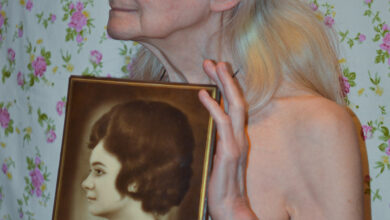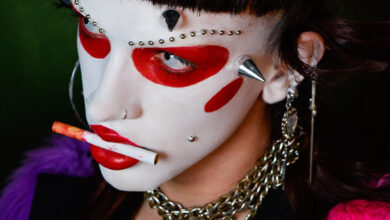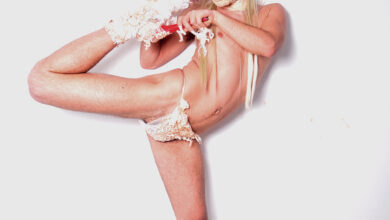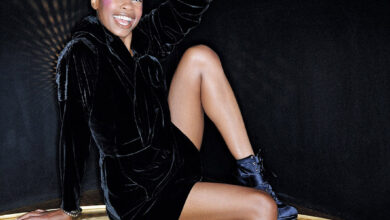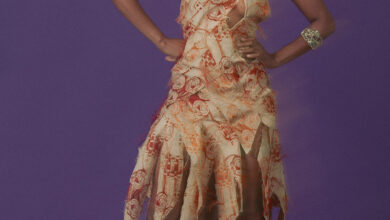FashionZoot meets
CRACKING THE DRESS CODE: SAMUEL GASSMANN
Samuel Gassmann”s handmade cufflinks are informed by critical research and journalistic practice.
Text by Anna Battista
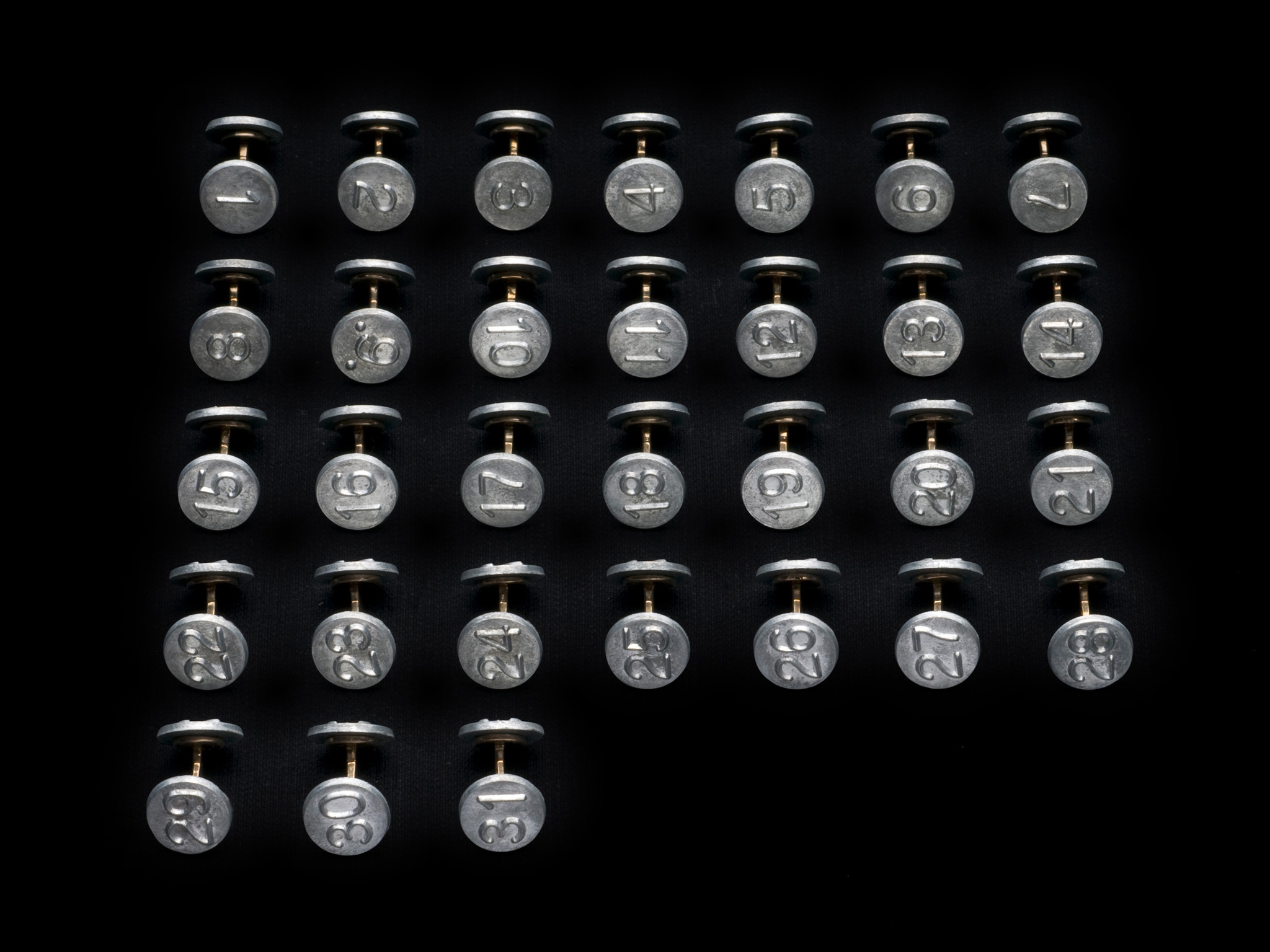
A journalist”s job is mainly letting others tell their stories. Yet sitting down to hear a journalist”s own story can be equally fascinating and educational and Samuel Gassmann has a charming story to tell.
An art curator and freelance journalist, Gassmann found himself deeply drawn by a research for a documentary about the origin of the button. Further researches led him to concentrate on the history of the dress code and on how clothes were linked to day, evening or sport events and to a life of pomp and circumstance at the royal courts. Soon his journalistic research turned into the inspiration for a unique collection of “haute couture” cufflinks.
Handmade in Gassmann”s Paris-based studio, the cufflinks – in mother-of-pearl, coral, glass, incorporating ancient coins or decorated with acro numbering tacks, engravings of the sun and the moon or with letters designed by Alex Wiederin, Creative Director of Vogue Hommes International – tell a story of craftsmanship, style and quality.
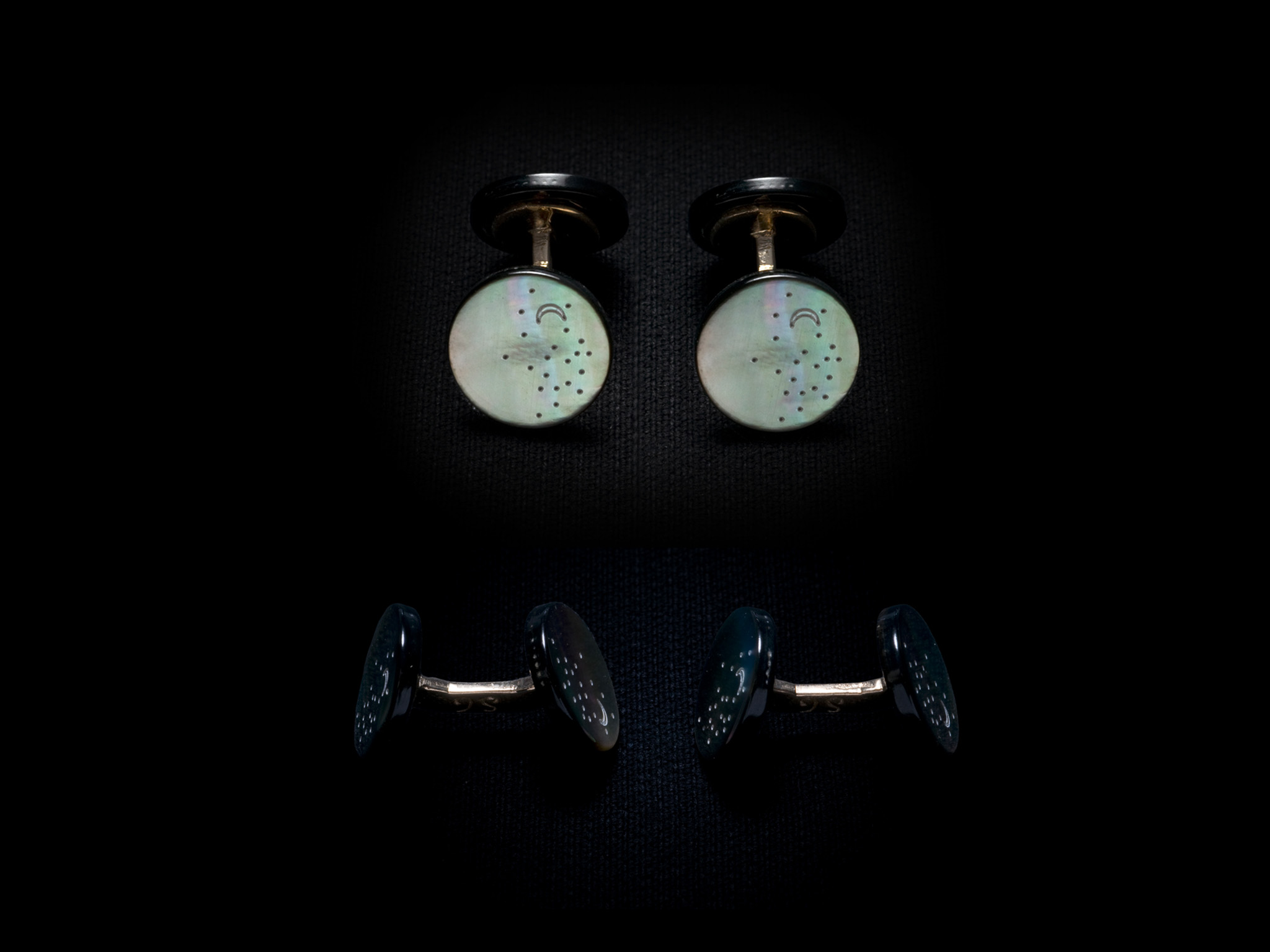
Zoot Magazine: When did you decide to become an accessory designer?
Samuel Gassmann: After studying Art History at La Sorbonne, I began working as a curator for numerous contemporary art exhibitions and as a freelance journalist for Arte”s Metropolis magazine.
In 2007, I began researching on the theme “Origin of the Button” – the smallest thing for a man”s clothes – for a documentary project. These researches led me to find small mother-of-pearl cabochons which looked as if they were made for cufflinks. I found enough to make 223 pairs of cufflinks. During this period of time I also developed an interest in the pre-French Revolution laws that told people how to dress up during different times of the day and occasions, from the morning to the evening, during sport events or for formal occasions such as visits to the court. I started my line soon after this research with an article on Elle magazine, becoming an artisan and designer by accident.
Z: Your collection started with the button-shaped cufflinks, can you tell us more about them?
SG: I moved from the traditional definition of “button” for a man”s shirt – 11 millimeters and four holes – and I called it the “Archetype”. For the day version I opted for mother-of-pearl because, until the “60s, all buttons were made using this material. For the evening I used grey mother-of-pearl, while for the sport events I employed porcelain since I wanted a material that could be painted in the colours of your team or on which you could draw the number of the shirt of your favourite player, but that would still allow you to remove colours and numbers in case you change your mind!

Z: What atoledo about the colour-coded cufflinks instead?
SG: There are two ideas behind them: the first one is associated to art and the second one to the concept of temporality. I started the “Colour(s)” cufflinks as a representation of two opposite colours, blue and red. Then I tried to imagine a way to have a well-balanced system of colours using Mondrian”s orthogonal structure of representation. At first, I created two blues and two reds to have a square representation of the colours. At the moment there are four shades in the “Colour(s)” collection – blue, red, yellow and green. The second idea is that the colour has a temporary existence: think about Greek statues and how they lost their colours throughout the centuries or about how hair lose colours turning grey and then white. To produce these pieces, we used natural pigments that are sensitive to light to dye the shells made by François Mercier. In a few years’time, all colours will disappear completely but the structure will still remain. That”s why I called the line “Colour(s)”, putting the “s” in brackets to underline the fact that all the colours will eventually fade away.
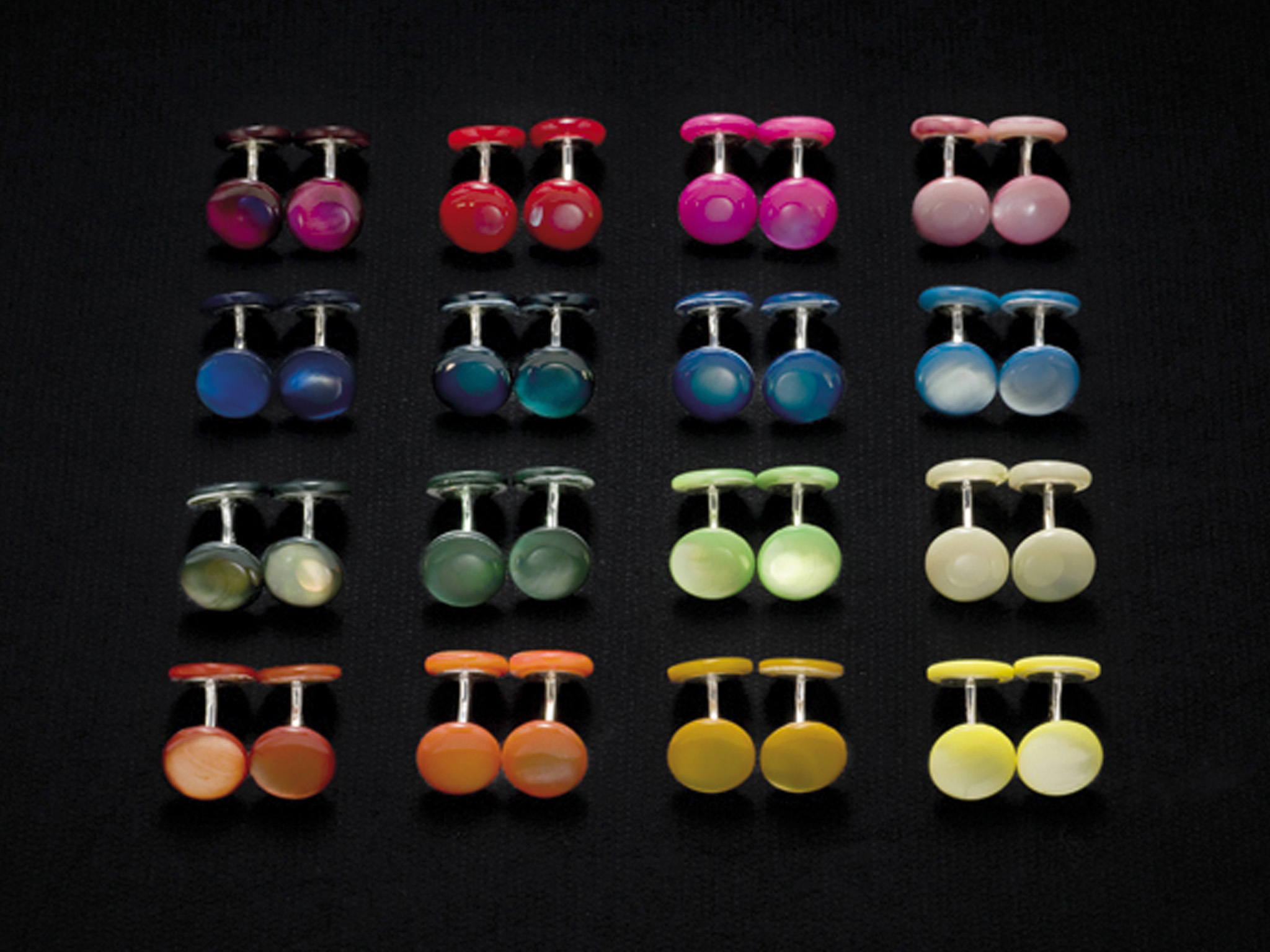
Z: How long does it take to make a pair of cufflinks?
SG: It depends on the material I”m using. I make the cufflinks by myself in my Paris-based studio and it usually takes a few days to make some of the cufflinks for the “pomp and circumstances” line, while for others it may take less than a day.
Z: Does your previous job as a journalist still inspire you?
SG: Yes, it does. I actually do not see any real difference between my job as an artisan today and my previous job as a journalist. My way of working did not change at all: before I create, I still sit down and carry out my researches, finding the meaning for a collection in the same way I would have started working on the background information for a documentary.
Z: Would you like to expand and create also other lines of accessories?
SG: I already came up with a day shirt for Japanese label Arts & Science (http://arts–science.com/). I like to describe this shirt as a cookery recipe, a perfect blend of measures and materials. Arts & Science interpreted my concept and had the shirt made by hand by one artisan. It will probably be available from the end of March and will be distributed only by Arts & Science in Japan. Now I”m already thinking about shirts ideal for day, evening and sport events or for all your “pomp and circumstance” occasions.
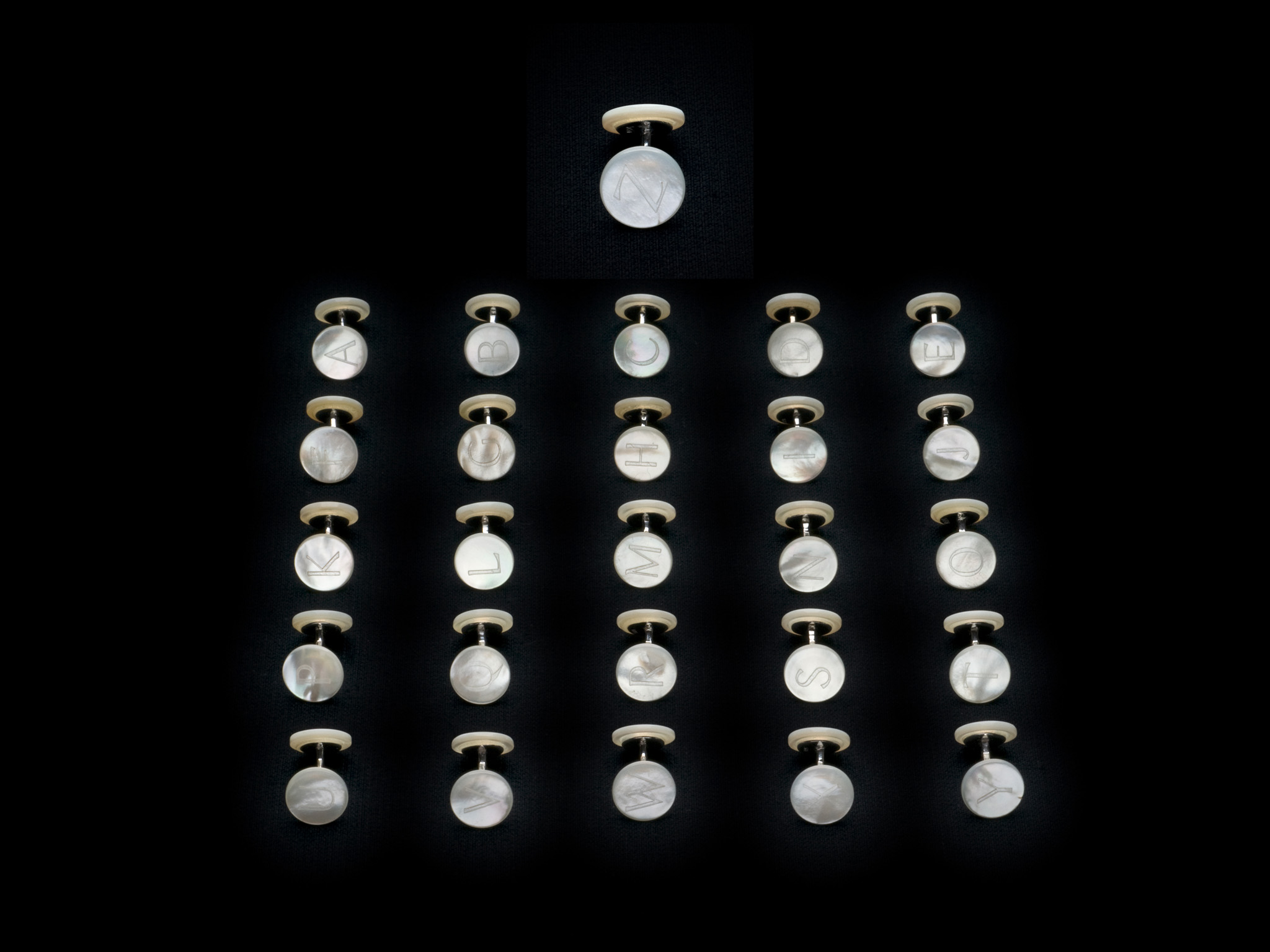
Images:
House Cabochon (white brass, bronze link): 130 Euros
Day Archetype (mother-of-pearl, silver link): 110 Euros
Day Alphabet (mother-of-pearl, silver link): 110 Euros
Colour(s) (tinted shell, silver link): 110 euros
Evening Cabochon (grey mother-of-pearl, bronze link): 90 Euros
All images courtesy of Samuel Gassmann

